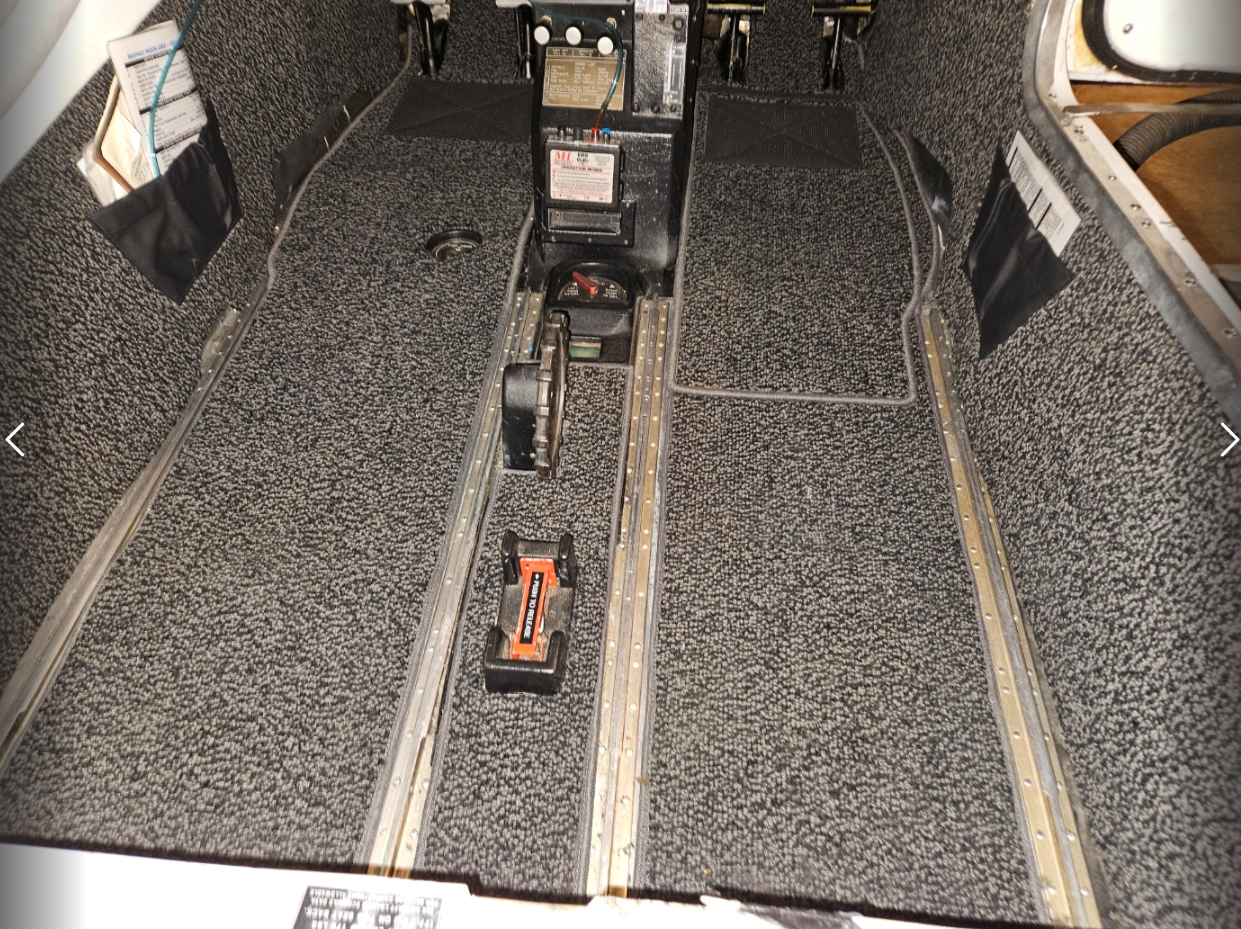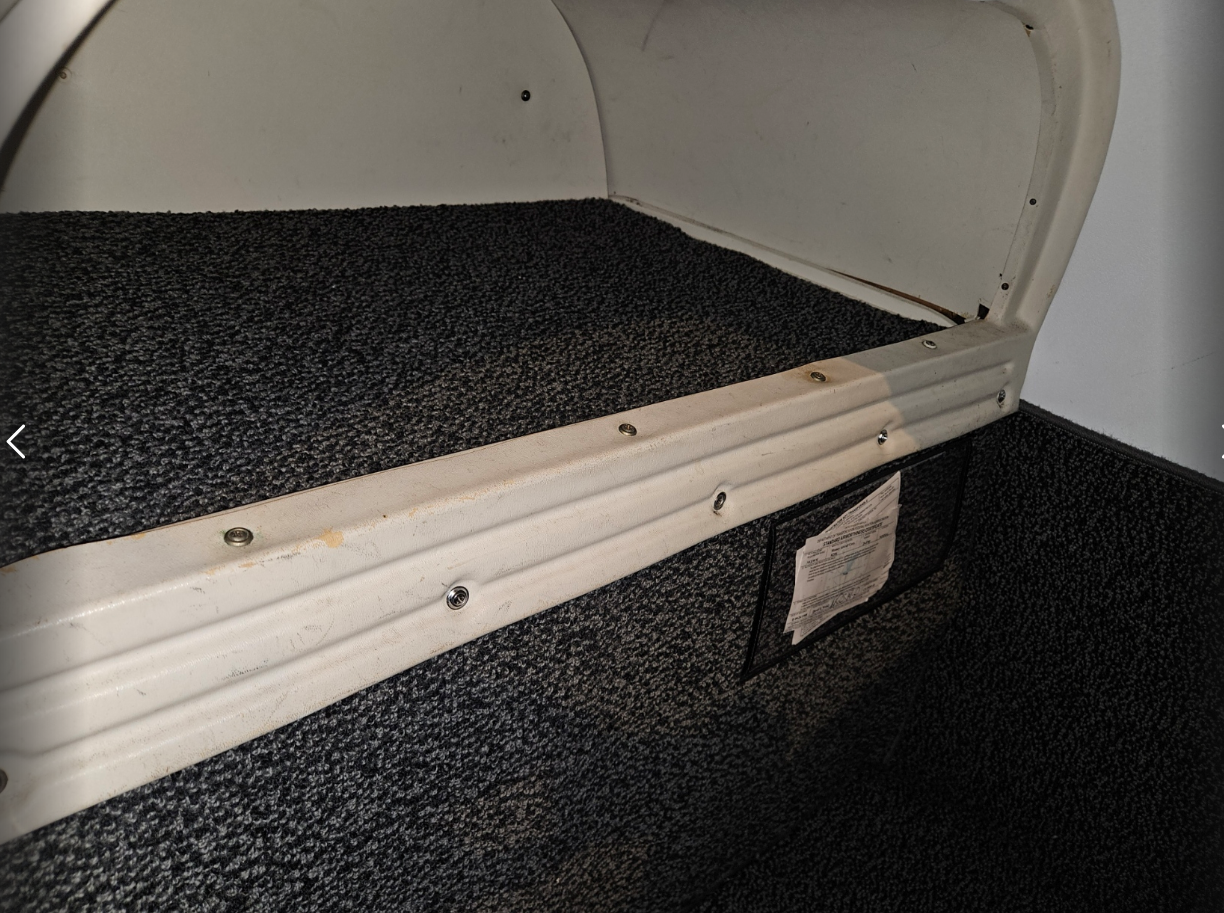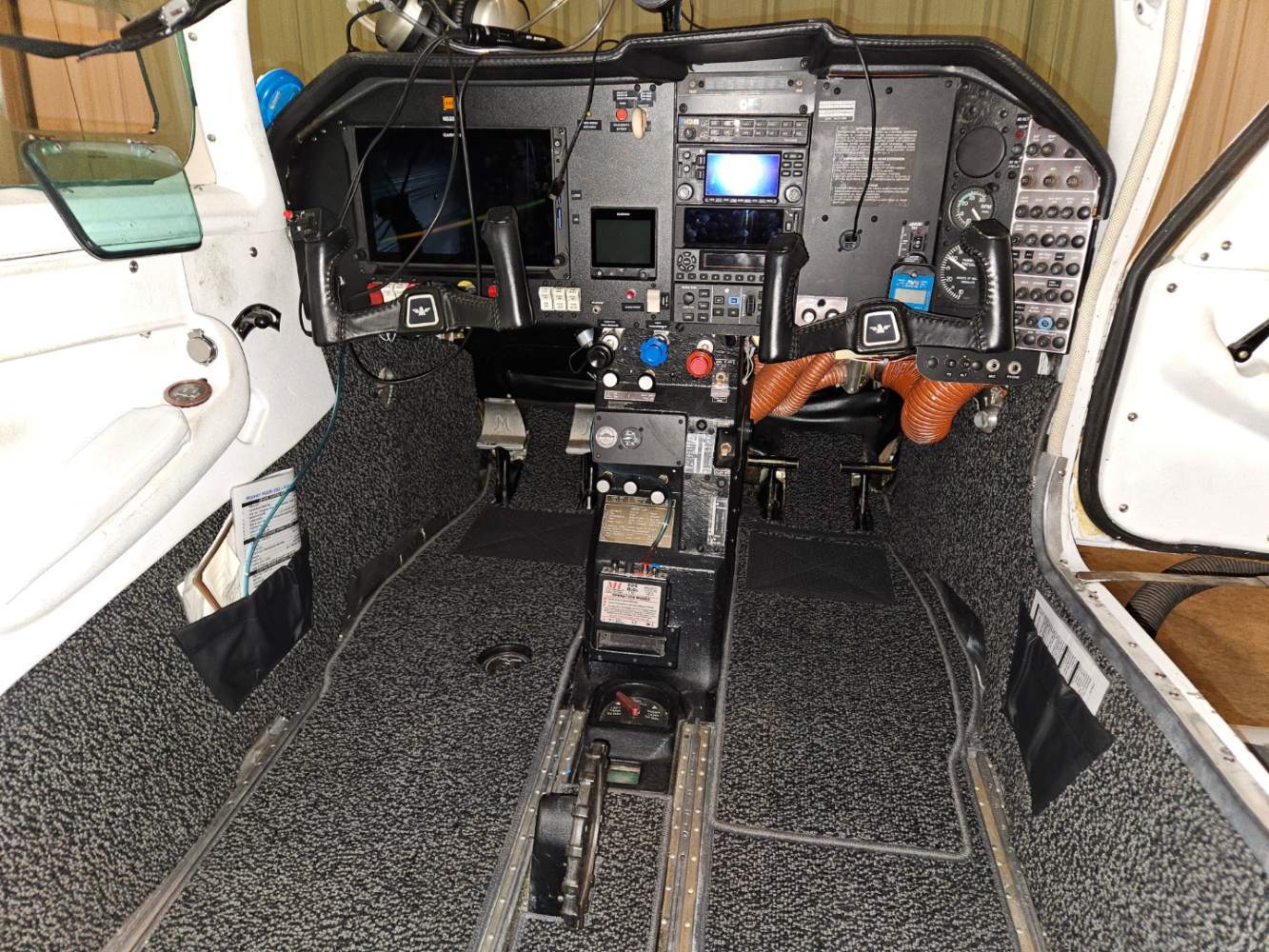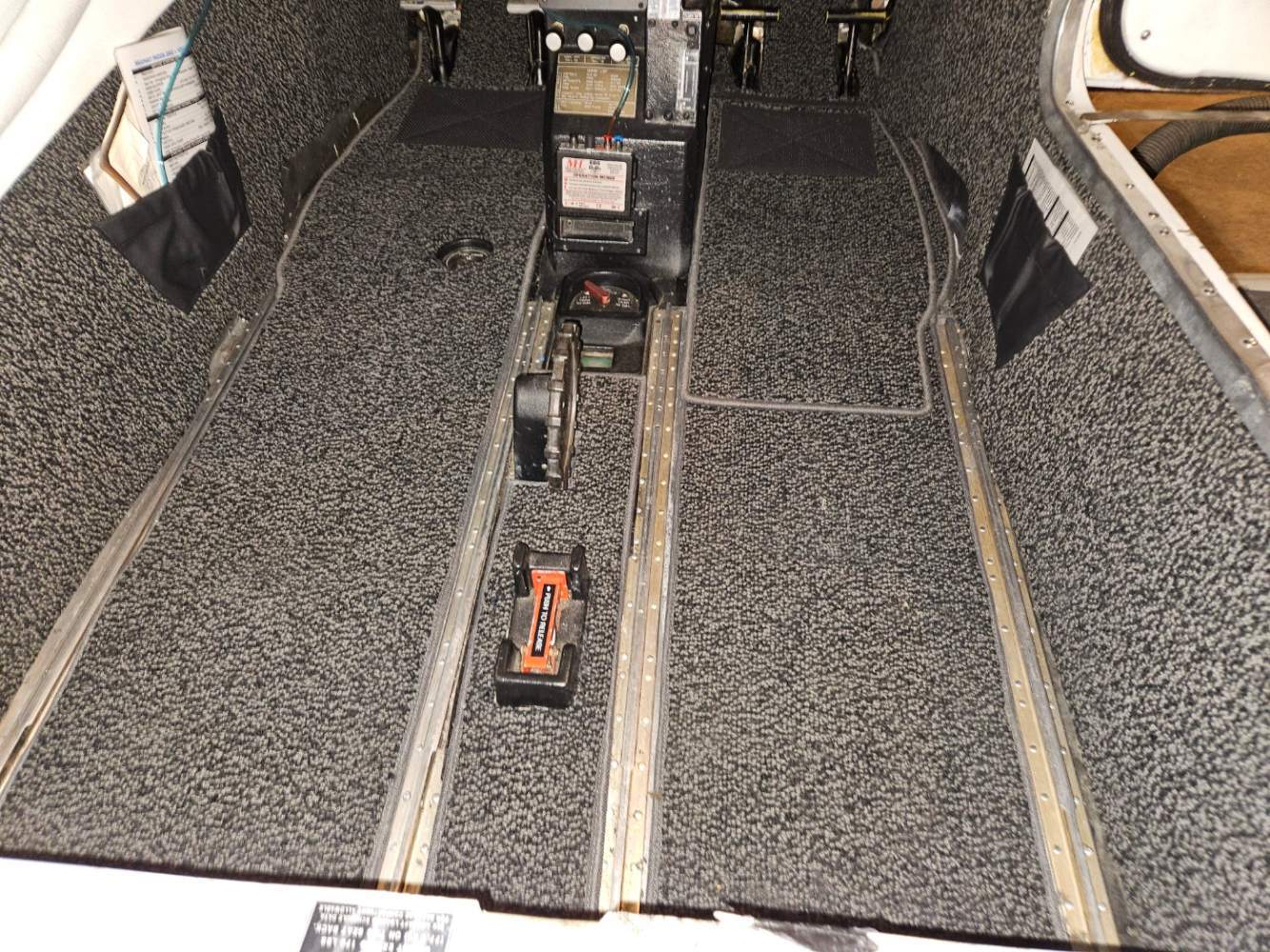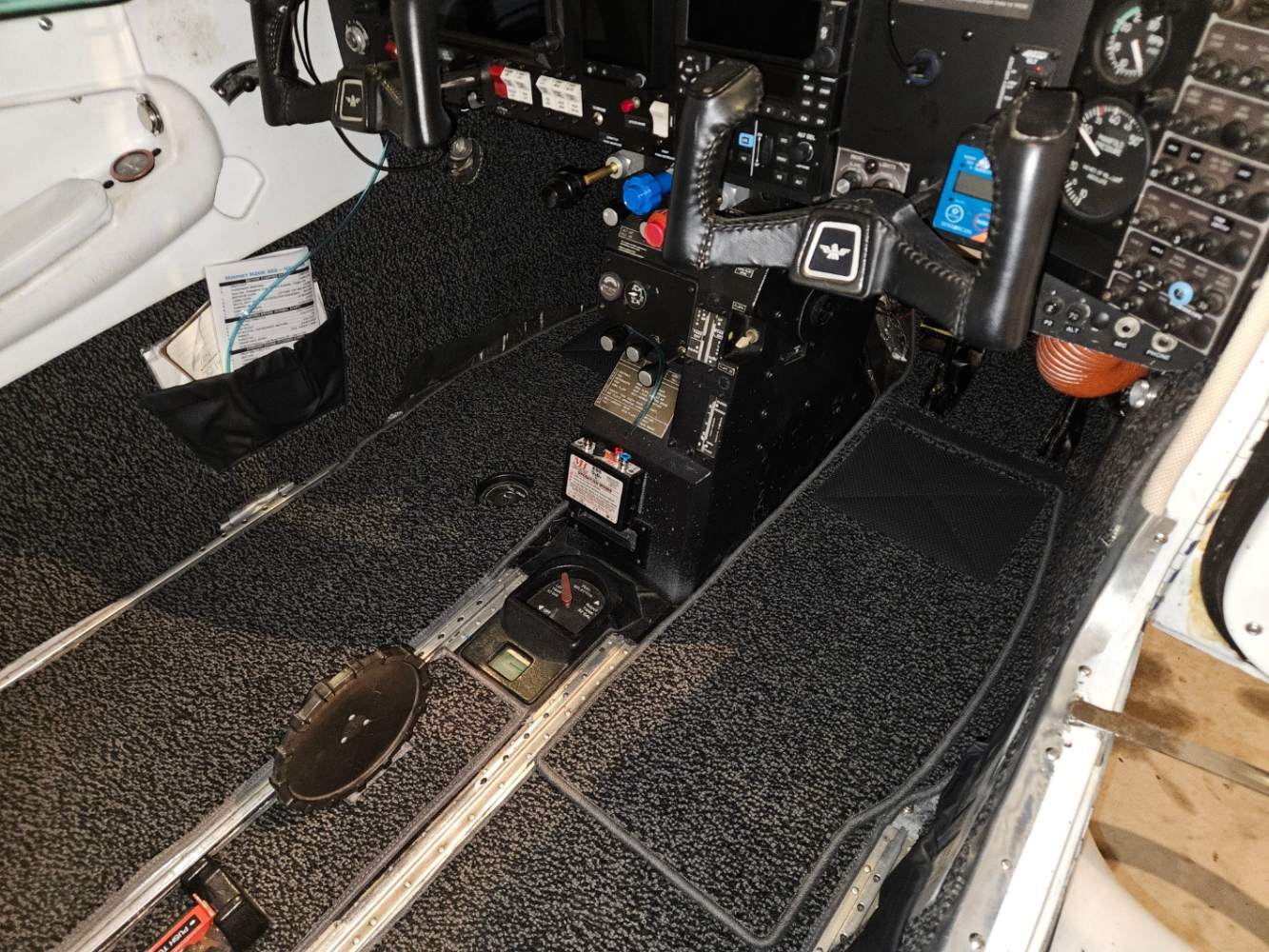-
Posts
730 -
Joined
-
Last visited
-
Days Won
5
Content Type
Profiles
Forums
Blogs
Gallery
Downloads
Media Demo
Events
Everything posted by Z W
-
Looks good. My cowl required a whole bunch of different length fasteners to fit right. Most were 5's but quite a few 4's and 6's. Seems to be a lot of variation in our hand-built machines after a few decades of wear, tear, and repairs. I ordered extras of every length from Skybolt and now have spares in the hangar for when one goes missing.
-
+1 for the Lamar units available at Aircraft Spruce. Some of the OEM part numbers are now unobtainable anywhere. Some A&P's have been known to install tractor solenoids from the local auto parts store. Don't let them do that. The Lamar units are very high quality and cheap enough to keep spares on the shelf in the hangar or even on the hat rack in the plane.
-
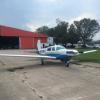
Upgrade Questions M20E to Encore/Or Encore Conversion
Z W replied to mooneydemi's topic in General Mooney Talk
This is a good way to describe it. I have a 2-bladed prop. At max gross, the takeoff roll is pretty slow, I need 3,000+ feet of runway to feel comfortable, even though the book says 2,500 or so is enough and it probably is. The plane kind of mushes up off the ground around 70 knots. If you yank too hard you'll hear the stall warning. You want to accelerate in ground effect. Once you get the gear and flaps up and hit 100 KIAS, it will do +500 FPM as high as you want to climb and becomes very comfortable. But until then it's a bit of a runway hog. The C model never felt that way at its max gross, although with its smaller tanks and back seat, max gross was harder to get to. I did this once taking off out of Telluride, 9,000 feet MSL, with 3 adults and 75 gallons (6 hours) of fuel on a 70 degree day. Altitude doesn't matter much. The plane will do it and it's amazingly capable. When you're flying light it leaps up off the runway. I would absolutely switch from a short body to the K again. Sometimes I do miss the C model, especially when the K is in the shop, but it's more I wish I still had one of each. Both are great planes, just different price points and capabilities. -

Upgrade Questions M20E to Encore/Or Encore Conversion
Z W replied to mooneydemi's topic in General Mooney Talk
I went from a M20C to a M20K with the TSIO-360-MB (252) engine. It is definitely better for back seat passengers. 3 adult males and go is no problem. 4 adults and go, you have to watch your W&B, and are generally limited to 2 hour legs, or else you'll be staring at the fuel gauge and worrying about headwinds, which isn't how I like to fly. If you're hauling 4 adults you will have to tell them to pack light, which is not always popular. It does not climb that great at max gross of 2900 until you're 100+ KIAS. I suspect the Encores or Encore conversions don't climb any better at their higher gross weight, but no Encore owner talks about that. It's a pretty good load hauler as long as you offload gas for cabin payload. At 12 GPH and 170-ish KTAS, it goes a long way on not a lot of gas. Maybe the best in the Mooney fleet for that. The maintenance cost has been more than on the C model, but in the grand scheme of owning a Mooney, it's a rounding error. The turbo has required a little bit, but not much. Dual alternators and voltage regulators have been more expensive. Speed brakes have to be maintained. Extended range tanks to have leaks patched in. Hot prop. Retractable step. Onboard oxygen (this has been expensive). More avionics than you'll usually have in a short body, but not necessarily. Have replaced some cylinders. Have not had to overhaul the engine, but that's probably where the real cost increase is. None of the rest of it is major, and all matched to higher capability, but it all has to be fixed, replaced, and upgraded over time. If you have a regular mission of 4 adults + bags, I don't think there's any Mooney that will really do it well. You need a 6-seater. But the K models are great if that's only an occasional need for you. And I've found it pretty rare that me and my wife know another couple that 1) wants to fly GA with us, and 2) has the flexible schedule required to set off in a non-deiced piston single without radar for a trip, and being OK with the possibility of being delayed 3+ days for the departure and the return if the weather turns bad. -

Man, You know you are old when you change out carpet
Z W replied to Echo's topic in Vintage Mooneys (pre-J models)
If you have to take the front seats in and out, I found buckling the lap belts and cinching them up tight against the seat bottom gives you a nice handle to both lift them in and out and slide them back and forward to get them on or off the seat rails. I also cleaned at least a couple decades worth of black gunk off the seat rails on the floor. I'm not sure what it was made of, but it took several applications of brake cleaner and a scrub brush to get it all off. Shiny new looking rails was the result, sprayed them down with some tri-flow lubricant, and now the seats slide and go on and off a lot easier. Still not a fun job, but better than before. I'm a younger guy, and the next day after all that cleaning I felt it on my knees and back too. -
Been through the rigging issue, and I have the same autopilot. 1982 K model. Plane rigging was way off when we got it. Wing wanted to drop sharply to the right when released, and the ball was always about 1/4 to the right in straight and level flight. Hand flying approaches was always a challenge, and with the old KAP-150 autopilot on, the plane flew around in a slight slip all the time to track straight. What I learned is that many mechanics go changing aileron and rudder settings when the problem starts somewhere else. The proper way to fix it is to start with the gear doors, make sure they are flush when closed and adjusted properly. Then the flaps, make sure they are in the proper position and equal. After that, set the ailerons, rudder and elevator (not sure which order). There are specifications for how to do it in the service manual, and they call for the use of rigging travel boards. If you don't start in the right place, or just start changing things to chase the turn and bank indicator, each adjustment just puts it further out of whack. You need an experienced mechanic with set of proper rigging boards, most likely. Once everything is properly centered, test fly and make very minor adjustments if necessary. None were required for me. Side note - do all this without anything like a large iPad or VFR GPS bolted to the yoke throwing off the balance. Dave Green at Sarasota Avionics in Florida did all this and now the plane flies beautifully. Like on rails, hands off. Autopilot is also very solid and has always been. It was installed after the rigging was fixed. Good luck, hope you can get it figured out.
-
I have two, and both are mounted on the bottom of the radio stack in the copilot's footwell.
-
My 1982 K model service manual says the starter solenoid can be either in the footwell or in the engine compartment on the other side of the firewall. Ours is inside the footwell. It's a bit of a pain to access but not too bad. Much easier with the copilot seat removed so you can lay flat on the floor. I wouldn't think it's worth relocating it.
-
Many of us have had similar issues. First, I'd check your air intake plenum boot (the one that goes from your lower cowl to your air filter housing). Make sure it's properly installed, not torn or ripped, and not choking off your engine's air intake. You can verify by removing the access panel to it on the copilot side of the lower cowl. I've had it installed wrong and repaired wrong by shops. A clue will be your alternate air light coming on at high power. And the engine will not run right without proper air flow. If you're getting good air intake, the problem is usually related to the fuel system setup. You need a good mechanic with proper gauges to perform the whole setup as set out in SID97-3G, which is now actually a part of Continental's M0 maintenance manual but the steps remain the same. I've attached a copy. They can't just "check the fuel pressure in high and low". It has to be set up in a certain order and tested with the cowl on which is a little tedious. You need accurate fuel flow and RPM gauges. In my experience many mechanics do not have the tools or the knowledge to do this. The 252 engine is particularly finicky and hard to get right, but runs great when set up properly. Don Maxwell fixed mine the last time someone else messed it up. I'd recommend taking the plane there or to someone who has set up the TSIO-360-MB engine before. SID97-3G - Continuous Flow Fuel Injection Systems Adjustment Specs and Instructions.pdf
- 23 replies
-
- fuel servo
- fuel pump
-
(and 1 more)
Tagged with:
-

Hangar rash from maintenance <minor rant/>
Z W replied to toto's topic in Miscellaneous Aviation Talk
When our long-time A&P retired and a new crew took over the shop, we started getting the plane back covered in greasy smudges that weren't there when it went in. Happened enough times I mentioned it to them. I keep it pretty clean. Shortly after that, we had a series of maintenance-caused issues leading to almost a year in downtime and several dangerous conditions before finding a new shop. Looking back, you could see how they were treating the plane by the greasy fingerprints. Should have pulled it out of there then. I'd put new scratches and dents on the plane in the same category. Not talking about chipped paint at the edge of the cowlings and inspection panels, or an occasional chip from a dropped tool. I do understand some of that is going to happen. -
A form-a-funnel works pretty well on getting oil from the filter into the bucket. Comes in handy doing lots of other things too around the plane / hangar. $15 on Amazon. https://www.amazon.com/Cyantor-Flexible-Draining-Foldable-Reusable/dp/B08R5YYQJ6/ref=sr_1_7?crid=27IH2ZDX141O3&dib=eyJ2IjoiMSJ9.eLE_CAL9gdciPWXq2JwDmg8HhI5ZgEHmFpABNsHY80nA6s1vyCd93LK7xutKNuTx79SAZDfj_QchQ-RT_TZbTNAigIncivLk-QNledha-Pd5RtUrpqgNf0HdEPeKibQz01-VbF_D0T7Au1Sy1w6ab_uvUfD1Gl0DqNULJo3fwcwgXuuLDc96zVLzY-qpGJB59SNzXLfIr3IErzGDCcODCtFP2zHobSGbcaXnruN7tG4rUSb5efsKfmkXgPNCOeKfXOSmdrlueLc1bZnkH_6x9tHBMBcHfj1OQgWYVi9pJeI.gMEuGBpIAqqiXIxrvh2g-uEVcNs1wECj95gVL1uUGsc&dib_tag=se&keywords=form+a+funnel&qid=1713354127&sprefix=form+a+funnel%2Caps%2C92&sr=8-7
-

Starter solenoid 'earth wire'?
Z W replied to Joshua Blackh4t's topic in Vintage Mooneys (pre-J models)
That looks a lot like the flyback diodes sold at Aircraft Spruce: https://www.aircraftspruce.com/catalog/elpages/solenoidassy.php It acts as a one-way path for electricity and keeps the charge in your solenoid's coil from traveling back up the switch wire and causing a spark in your starter switch. If you have trouble getting your exact part number of replacement solenoid, you can get a Lamar FAA/PMA replacement, very nice units: https://www.aircraftspruce.com/catalog/eppages/sts-12s24s.php?clickkey=8060 If your master solenoid looks like that one, now might be a good time to replace it too, or at least throw a new one in your spare parts bag so you aren't left stranded on the ground somewhere. And if the rest of your battery-to-starter wiring looks as corroded as the wire ends in the photo, just cleaning the connections with a wire brush and adding some dielectric grease might be a good idea, and might be all it takes to get everything working right again. -
I had a very good initial PPL flight instructor. We did a lot of practice where he let me come into the airport at different heights, speeds, directions, etc., then his instructions were "Look out the window, and make the airplane do what you want." and "Keep your aim point centered in the windshield and get your speed right, and the plane will land itself." That was all in a 172 but you can do it in a Mooney too. I am still most comfortable landing that way. I glance at the airspeed indicator but most of my focus is visual, outside. If you come in too fast you'll float, but you can feel that in the controls, and in the seat of your pants, and see it in your attitude - if you're too nose low for your flap setting, you're too fast, usually. Basically what an AOA indicator would be telling you (wish I had one). Another pilot I know and fly with learned only stabilized approaches. His CFI was an airline pilot. He does math in his head in the pattern, calculating his descent on downwind and base, checking AGL on final, compensating wind speed with altitude. Would stress me out. But to each their own. I have wondered how those pilots handle situations where a stabilized approach is not possible. Slam-dunked by ATC. Last minute pattern changes from tower. Flying the FISK arrival at Oshkosh. Landing at Gaston's. Circle to land ops. For the pilot I know, those are very stressful situations. I've encouraged him to go get some VFR practice and instruction. I think it should be taught more than it seems to be.
-
Found a tip here or somewhere on the internet to use Peerco 321 Adhesive Remover. Pricey, but it works great to dissolve all types of glue without removing paint: https://www.aircraftspruce.com/catalog/cspages/peerco02-00234.php I guess it's what they use to remove deice boots from wings. I can confirm it removes carpet glue and door seal adhesive very well also. Pleasant citrus smell, no fumes like mineral spirits.
- 16 replies
-
- 205
- special edition
-
(and 2 more)
Tagged with:
-
I cut out for the fuel strainer. I just laid the piece over it and used a fresh utility blade knife to cut through like a pie, then around. Wasn't too bad. The directions say to fold the pie pieces under but they didn't sit flush and it wasn't working so I cut them out. Ideally I would put some binding or something around the circle, but I have not done that. They sent velcro strips with the kit. I have not installed them yet. So far, the carpet stays where it is supposed to and doesn't move, since it is such a nice tight fit. I am not currently planning to do anything to hold it down, which makes it easy to pull the carpet for cleaning, inspections, or modifications. If I have trouble my plan is to use some rubber cement to install the velcro strips it came with. I did glue down the pieces on the split rear seat backs. I used 3M spray carpet adhesive, followed the directions, very easy. I would not glue all the carpet down. We spent a lot of time stripping out old glue before installing the new carpet. Nasty mess.
- 16 replies
-
- 205
- special edition
-
(and 2 more)
Tagged with:
-
I recently got a kit from SCS. It was easy to order samples in advance to see what you're getting. I needed some pieces from their 231 kit and some from their 252 kit. I had some parts of my plane that did not match their drawings at all. Sent them measurements for those and they custom-made them, turned out great. Had to slightly trim some pieces, easy to do with a pair of scissors. They also made a piece for my hat rack, which was not carpeted on their drawings. I think it took about a month (which included Christmas and New Years) for the custom work order and they did a good job. I'd recommend the kit and the company. I had considered just ordering raw material and trying to cut and bind it myself, since none of the kits seemed to really fit my plane, but I'm glad I did not. Theirs is much nicer than I could have done. My only complaint is that next to the new carpet, the seats and the plastics now look a little worn out, where before I thought they looked pretty good...
- 16 replies
-
- 205
- special edition
-
(and 2 more)
Tagged with:
-
Went to Skybolts instead of Camlocs and never looked back: https://store.skybolt.com/storefront.aspx I ordered an assortment of SK27S3 (2700-series) in different lengths. E.g. some SK27S3-3S, some SK27S3-4S, some SK27S3-5S. The -<number> is the length of the fastener, and our cowls are somewhat custom items that over time will work better with different lengths. You can keep swapping till you find one that is tight enough to not fall out, but easy to install. I believe most that fit were 4S or 5S. You may also want some SK28S3 (2800-series) which have a wider flange for any holes that becomes wallowed out, and some SK40S5 (4000 series) which are the large ones that go in the bottom of the cowl. Having some spares in the hangar for when a shop returns your plane with fewer fasteners than you delivered it with, or when you land with fewer than you took off with, may be a good idea.
-
I believe so, but both were in the plane when we got it.
-
Sounds familiar. Got a new trim chain cover in 2021 from Vantage Associates Alva Plane Plastics. Part number K740227-001. Cost $16.20 shipped. If I remember right, I had to call them, but they figured out what I needed and sent it. Never did figure out where the old one went. There were 3D printed versions described here on Mooneyspace, and the guy who made it was offering to sell them at one point. But Plane Plastics is hard to beat.
-
It's a floormat that came with the carpet kit from SCS Interiors. Great kit. There's a matching one for the pilot's side, but it covers the fuel drain valve, so I opted not to install it out of fear that I'd forget to drain the fuel as part of the preflight. I have since removed the copilot's floormat also, because it looked lopsided with only one side installed. I considered trying to cut a hole in the pilot's floormat for the fuel drain valve. Still could, but I'm not sure it would look good.
-
Here are some I took after putting in new carpet. It's a 1982 model year 262 conversion but I believe the interior is all from a 252 model. Hope it helps.
-
Had a KAP-150 that started acting up. Chased problems with it for a couple of years. When they go bad, they can have some undesirable failure modes. The last time, about 50% of the time, when you engaged the AP, the right wing wanted to drop 30 degrees. Not pleasant in IMC or with passengers. It also would randomly just stop capturing the glideslope on approaches. Shops were confused. Some chance it was the old King HSI driving it that was failing. Not many people wanted to work on either the HSI or the KAP-150, or understood how it all worked, and this was in 2018-2019, I suspect it would be worse now. Never did figure that one out. We put in the GFC500. Huge difference in the way the plane feels to fly. Reliable. Easy to use. Intuitive. Safe. Would do it again, despite the cost.
-

New engine will not start after already been started
Z W replied to Dick Denenny's topic in Vintage Mooneys (pre-J models)
The theory here is this: You had a perfectly running engine at shutdown. For shutdown, all you did is move the mixture to idle. There's still gas in the lines, primed and ready to enter the cylinders. The throttle is already cracked and set to idle speed. If you put the mixture back to full rich and crank, you're returning the engine just back to how it was a few moments before when it was running happily. It should re-start. This works only on short turns, such as refueling or loading or unloading passengers. If the plane sits for longer (30+ minutes) the fuel in the lines may vaporize from engine heat (vapor lock), drain back to the tank, or drain or evaporate out of the carb. Then you have to either re-prime, flush the lines with cool fuel from the tanks, or something else to return the cylinders to the proper fuel/air mixture to run. But after a quick turn, I will typically just crank first and see if it fires. If it doesn't, then you know it's safe to add more fuel without flooding the engine. -

New engine will not start after already been started
Z W replied to Dick Denenny's topic in Vintage Mooneys (pre-J models)
If the flooded start procedure is working (mixture full lean, throttle full forward), then I would suspect your engine is getting flooded somehow as you try to restart. In many engines, after a short shutdown, you can just put the mixture back in, turn the mags on, and crank to restart, and any boost pump or priming activity before that or along the way will flood the engine, requiring the use of the flooded start procedure. I'm not familiar enough with the E engine to recommend a hot start procedure for it, but I bet if you post here what you're trying to do that isn't working, you'll get some suggestions. -
When I tackled this job, I drained the old fluid out through the calipers while keeping the reservoir in the tail full. Got a fair amount of chunky brown fluid out of the calipers when I opened the bleeders. Kept going until fresh red 5606 came out. Still ended up with some air in the system due to changing the old stiff brake lines at the same time. Refilled from the bottom up using a pressure pot. Went OK, but the cheap Amazon pressure pot wasn't really up to the task. Next time I would buy a better one or try the oil can linked here. And the 5606 has eaten up that plastic pressure pot. I would use the synthetic fluid if doing it again, and also order the AN fitting to seal up the reservoir in the tail, which I did not have. Brakes worked afterwards but weren't even, had some softness in the right one until the second pump. Flying, changing attitudes, and pumping the brakes got it to better, but not perfect. Don Maxwell's shop fixed it all up at the next annual. Don't know what they did, but they were better at it than me. It seems to be a job best done by someone with the proper equipment and fittings, and maybe some experience, if that's an option.



